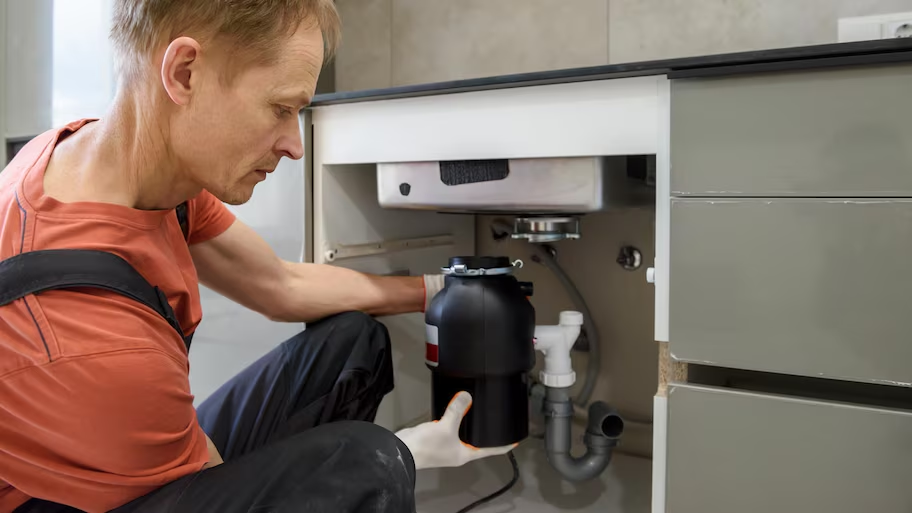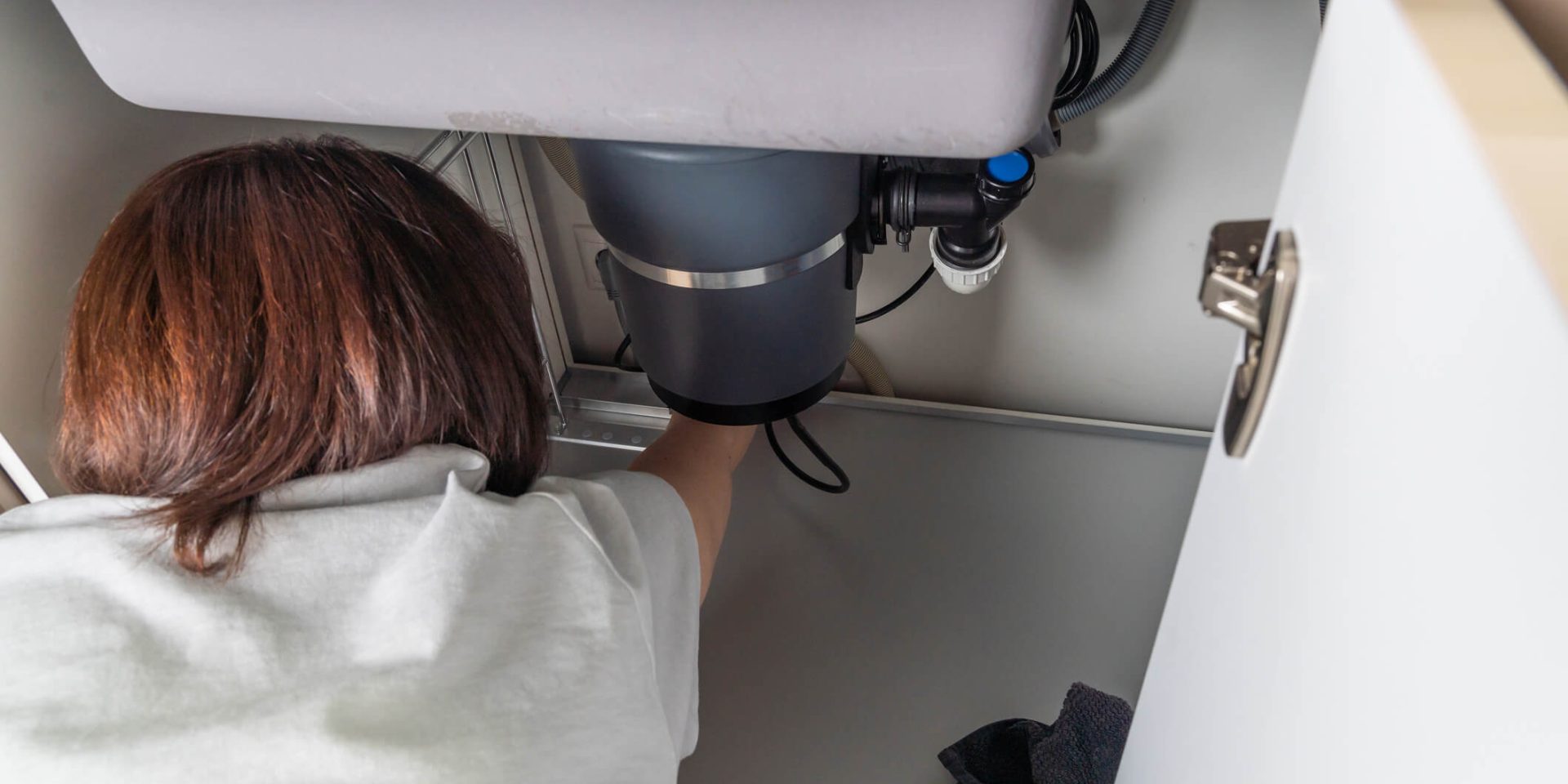Confirmed Solutions for Fixing a Dripping Garbage Disposal
Confirmed Solutions for Fixing a Dripping Garbage Disposal
Blog Article
This great article down below about Why Is My Garbage Disposal Leaking From the Bottom? is without a doubt informative. Read it for your own benefit and see what you think about it.

Garbage disposals are vital cooking area appliances that aid in throwing away food waste effectively. Nevertheless, a leaking waste disposal unit can be an irritating and unpleasant issue to deal with. Thankfully, numerous leakages can be taken care of quickly with a couple of simple actions. In this write-up, we will certainly discuss how to fix a dripping waste disposal unit properly.
Intro
Waste disposal unit are set up under kitchen sinks and are developed to shred food waste right into smaller sized pieces, enabling it to go through the plumbing system easily. While these gadgets are generally trustworthy, leakages can happen gradually because of damage, loose links, or damages to the device.
Typical Reasons For Leakages in Rubbish Disposals
Worn Seals and Gaskets
Seals and gaskets play a vital function in stopping water from leaking out of the garbage disposal. Over time, these parts can wear away, causing leaks around the disposal unit.
Loose Links
The connections in between the waste disposal unit and the plumbing system can come to be loosened in time, causing water to leakage out throughout procedure.
Cracks or Holes in the Disposal Unit
Physical damages to the waste disposal unit, such as cracks or openings in the real estate, can likewise cause leaks.
Identifying the Source of the Leak
Prior to trying to deal with a leaking waste disposal unit, it is vital to determine the resource of the leak. This can typically be done via visual examination or by carrying out easy examinations.
Visual Assessment
Inspect the waste disposal unit system meticulously for any kind of signs of water leakage. Pay very close attention to areas around seals, gaskets, and link points.
Evaluating for Leakages
One method to test for leakages is by running water through the disposal system and checking for any kind of noticeable indications of leak.
Tools and Products Needed for Repairing a Leaking Garbage Disposal
Prior to beginning the repair service process, collect the necessary tools and products, including a screwdriver, flexible wrench, plumbing technician's putty, replacement seals or gaskets, and epoxy or patching product for fixing fractures or holes.
Step-by-Step Guide to Dealing With a Leaking Waste Disposal Unit
Switch off the Power
Before trying any type of fixings, make certain that the power to the garbage disposal system is shut off to stop the risk of electric shock.
Situate the Leakage
Identify the exact location of the leak and establish the cause.
Tighten Connections
Utilize a wrench to tighten up any type of loosened links between the disposal device and the pipes system.
Replace Seals or Gaskets
If the leak is because of used seals or gaskets, eliminate the old parts and change them with brand-new ones.
Patching Splits or Holes
For splits or openings in the disposal unit, use epoxy or an appropriate patching material to seal the broken area.
Checking the Waste Disposal Unit After Repair Service
As soon as the repair is complete, check the waste disposal unit by running water via it to ensure that the leak has been solved.
Preventive Maintenance Tips to Avoid Future Leakages
To stop future leakages, it is vital to do normal maintenance on your garbage disposal. This includes keeping it clean, avoiding putting non-food products or difficult items down the disposal, and regularly checking for leaks or various other concerns.
Verdict
Finally, repairing a leaking waste disposal unit is a fairly uncomplicated process that can be completed with fundamental tools and materials. By following the actions laid out in this write-up and exercising preventative maintenance, you can keep your waste disposal unit in good working problem and prevent expensive repairs in the future.
What to Do About a Leaking Garbage Disposal
A leaking garbage disposal often goes unnoticed until you confront a sopping cabinet, a foul-smelling puddle, or an audible drip-drip-drip from the unit. The fix can be frustrating, too, because the leak can stem from a number of components in the system. Fortunately, with a little sleuthing, you can zero in on the leak and—depending on the exact location—stop the icky oozing and repair the component that caused it. Worst case scenario, if it turns out that the garbage disposal must be replaced, installing a new one is a reasonable do-it-yourself task for those with basic plumbing skills. Read on to keep the cash you’d otherwise hand over to a pro.
Prepare to find the leak
Prior to testing the garbage disposal for leaks, unplug it at the wall outlet and turn off the power from the breaker box to prevent electrical shock. Then insert a watertight sink stopper into your sink drain and wipe the unit dry with a clean cloth. In any handy container, mix a few drops of food coloring into a few cups of water, and pour the dyed water onto the sink stopper to help you locate the leak.
Investigate the source
the top, where the disposal meets the sink drain the side, where the dishwasher hose or main drain pipe connects to the disposal or the bottom of the unit Inspect each of these locations while gliding a light-colored rag over the unit; the dyed water will readily show on the rag and reveal the location of the leak. If a leak isn’t immediately apparent, remove the sink stopper and pour a few more cups of dyed water down the sink drain, then check for leaks again. Leaks near the top of the unit are more likely to show themselves while the sink is plugged, while side and bottom leaks are more noticeable while the sink is unplugged.
The metal sink flange that sits directly inside the sink drain is typically sealed around the top with plumber’s putty (a clay-like sealant) and then secured from under the sink with bolts. If the plumber’s putty deteriorates, or the bolts loosen, the flange can no longer form a watertight seal between the sink drain and the disposal—which could cause a leak at the top of the unit.
To reseal the leaky flange, you must first detach the garbage disposal. Start by loosening the screws securing the main drain pipe to the disposal, then loosen the screws in the metal clamp securing the dishwasher hose to the disposal and detach the drain pipe and dishwasher hose from the disposal. Loosen the screws in the mounting ring that connects the disposal to the metal mounting assembly beneath the sink, then pull down the disposal and carefully set it on a clean, dry surface. Loosen the bolts in the mounting assembly with a wrench, then pull down the mounting assembly and set it near the disposal.

As a devoted reader on The Handy Guide To Fixing Your Garbage Disposal Leaking, I was thinking sharing that article post was really useful. Appreciated our blog entry? Please share it. Help someone else locate it. We enjoy reading our article about Why Is My Garbage Disposal Leaking From the Bottom?.
Or Book Technician Here Report this page